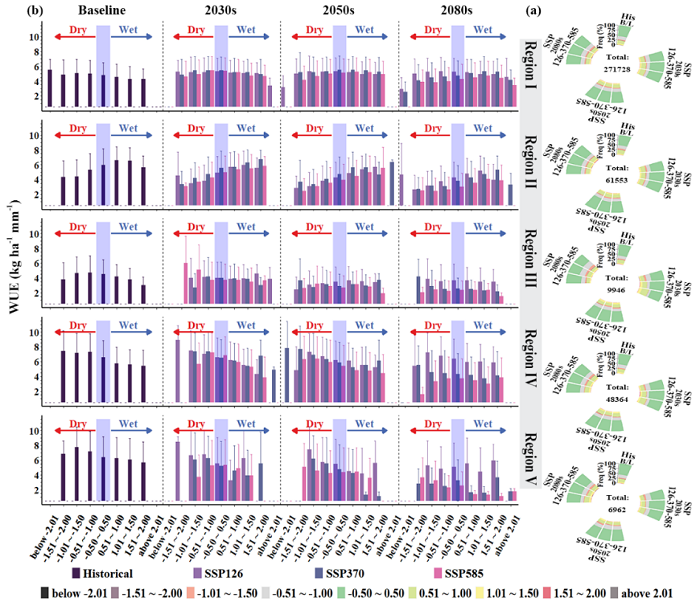Recently, the "Smart Meteorology and Utilization of Agro-climate Resources" Innovation Team at the Institute of Environment and Sustainable Development in Agriculture, Chinese Academy of Agricultural Sciences (IEDA, CAAS), revealed the technical paths for improving water use efficiency (WUE) of maize in different ecoregions of the Yellow River Basin (YRB) by employing a nested simulation method combining the climate model from the Coupled Model Inter-comparison Project Phase 6 (CMIP6) with the CERES-Maize crop model. The related research findings have been published in the Journal of Cleaner Production.

The research optimized the crop model using a grid-based bias correction method, revealing the WUE thresholds under different hierarchical dry-wet gradients and their key driving factors. The corrected CERES-Maize crop model can effectively simulate crop yield and evapotranspiration (ET), with normalized root-mean-square errors (nRMSEs) reduced by 4.00% and 9.73%, respectively. In the future climate change scenarios, WUE thresholds exist in all maize ecoregions of the YRB, primarily under mild to moderate dry/wet conditions. In the eastern region of the basin, WUE is primarily driven by yield factors, while that in the western region is mainly driven by ET. The study findings provide scientific support for implementing differentiated water management and optimizing agricultural technical paths in different regions of the YRB under future climate change scenarios.
This research was funded by the National Key Research and Development Program, the Asia-Pacific Network for Global Change Research (APN), and the Scientific and Technological Innovation Project of the Chinese Academy of Agricultural Sciences.
Linkage: https://doi.org/10.1016/j.jclepro.2024.144209

